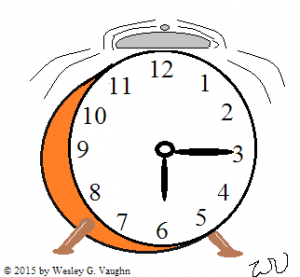

So often we hear about our need to get enough sleep and to sleep restfully. It is important that we are not sleep deprived. It is a matter of health and safety. It does affect the quality of our work.
A lot of stress is also put on the type of beds and pillows we use. Lack of proper support and cushioning leads to problems with backs, necks and other joints. It can cause breathing difficulties and make them worse.
Other items also factor in, such as nutrition, daily habits, lack of exercise, etc. These can interfere with our ability to relax and sleep. Not all are as obvious as caffeine an hour before bedtime, but they do influence how we sleep.
One factor not previously covered on this blog I have heard about anectodally. Articles I read and pages in books about the colonial era and the early days of our nation revealed the creativity of the early settlers and following generations up to the War of 1812.
What caught my attention was the habit of rising in the middle of the night, staying up for one to three hours, then going back to sleep. They did not lie in bed the whole time. It was not unusual for them to light a candle and write down thoughts which had percolated through their minds while they were sleeping. Some also tinkered with things, fixing or inventing as the case may be. Authors attributed to this a great deal of their genius and accomplishments.
Lately I have been reading about the benefit of pre-industrial sleep patterns. This ties in with sleep research. Growing up, it was common for people in our “developed” country to laugh at the “siesta culture” of lands farther south. The only rationale we could see for the traditional mid-day nap was the heat. Now we see another side to this.
During the past two decades or more, not only health professionals, but industrial engineers and management efficiency consultants have come to look at this aspect of sleep and how it affects our effectiveness in the workplace. Some of the most prolific inventors of the past 150 years, including Thomas Edison, have taken mid-day naps to recharge.
Three things have taken us away from the double sleep time which had been common hundreds of years ago. One is industrialisation and round-the-clock production. A second is the availability and affordability of artificial lighting, first kerosene and gas, then electric. And in our time, the proliferation of entertainment, information and electronic communication has kept us awake watching, listening, playing and keeping in touch.
We may not be able to have a natural dual sleep cycle with waking activity between the sleep times as our great, great, great great grandparents had. We can try to adjust our schedules to allow time to sleep and wake naturally. And if we can, it would be beneficial to at least have a time of relaxation some time during the day.
If enough of us are motivated, including the shakers and movers, we may be able to enable our people to rest naturally, even if it means taking a siesta.
This entry was posted on Friday, May 27th, 2016 at 10:25 PM and is filed under beds, mattresses, sleep . You can follow any responses to this entry through the RSS 2.0 feed. You can leave a response, or trackback from your own site.

Get New Post Notification via Email:

One thought on “Sleep Patterns: What they are and why they matter”